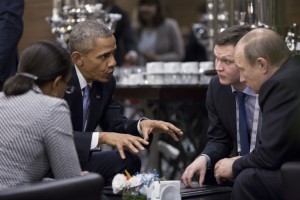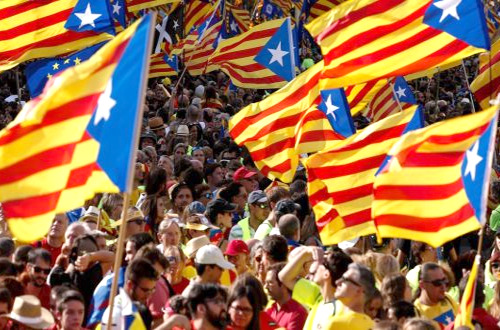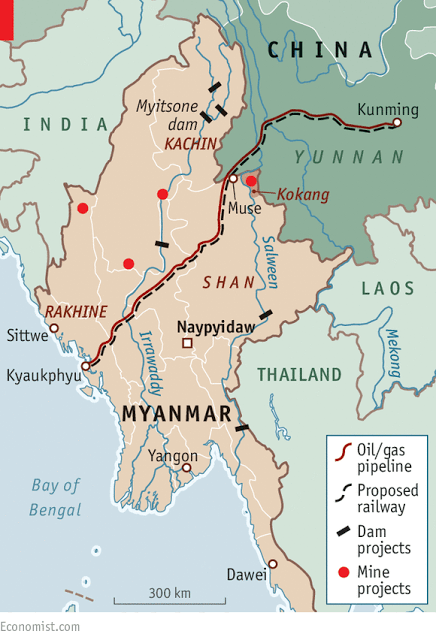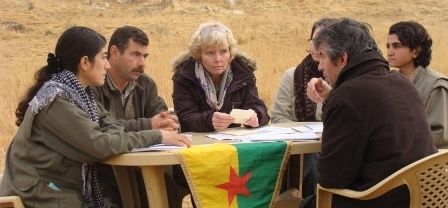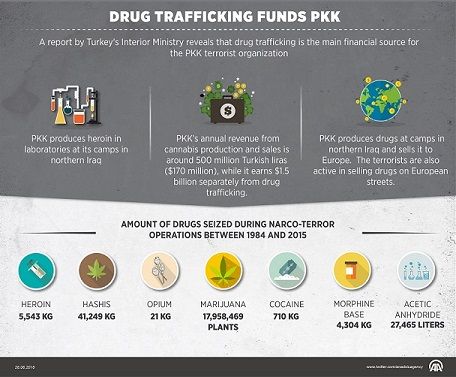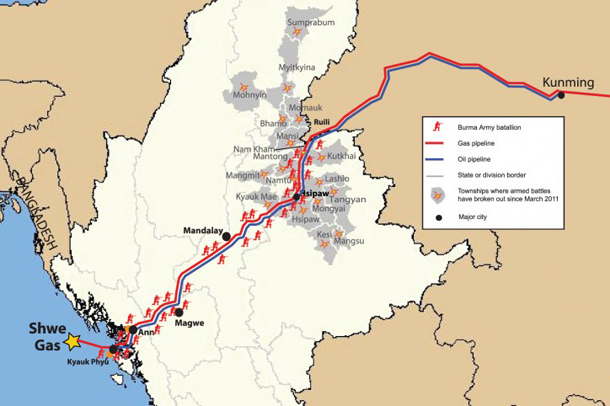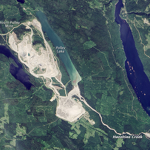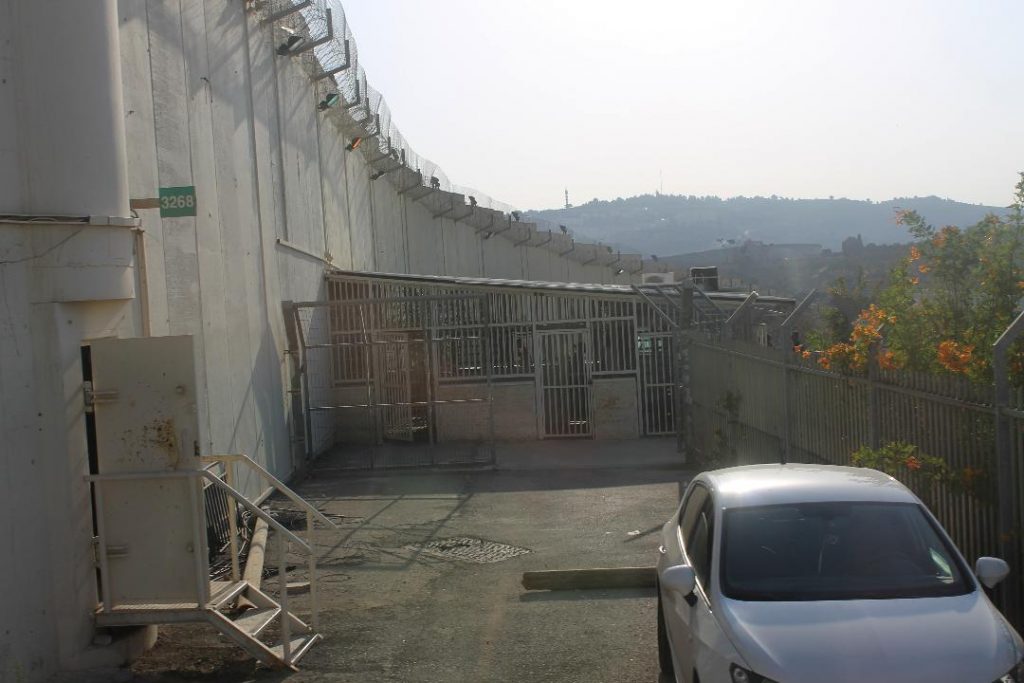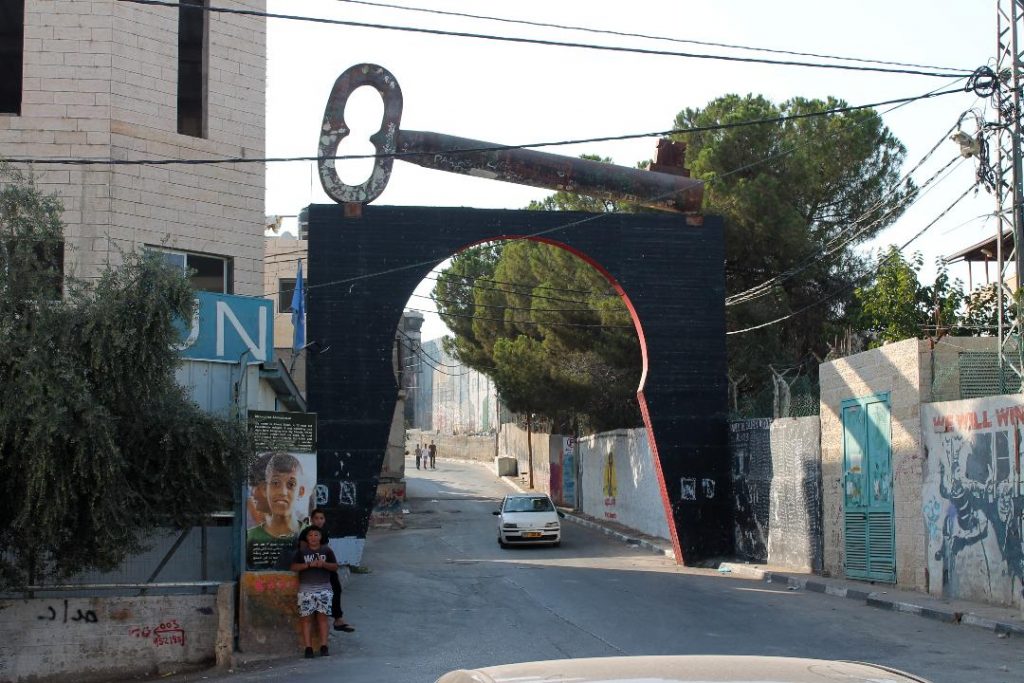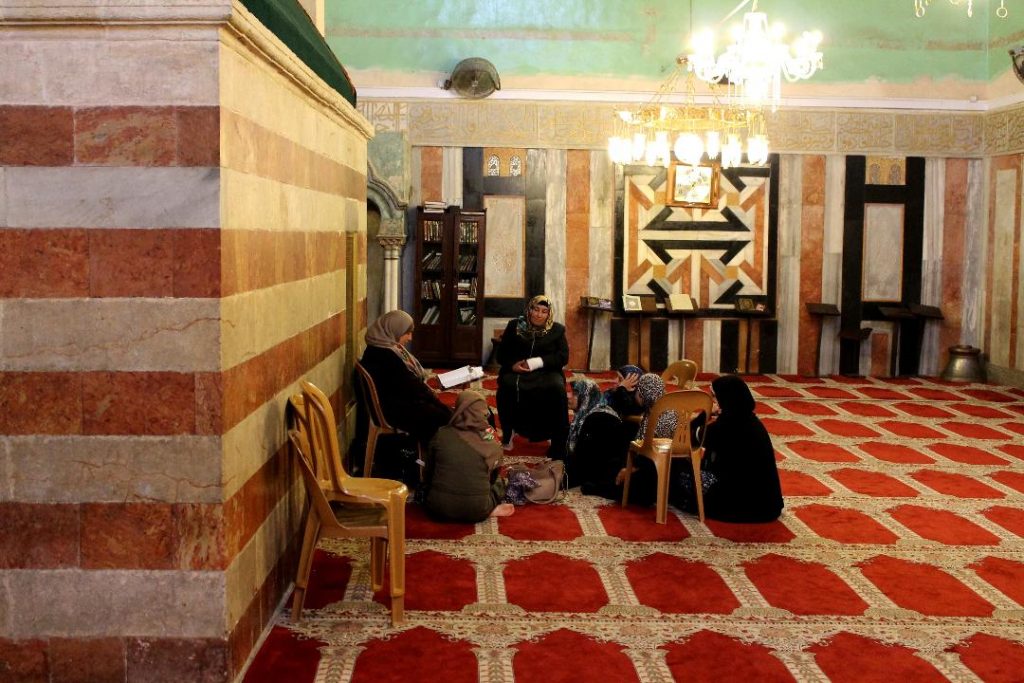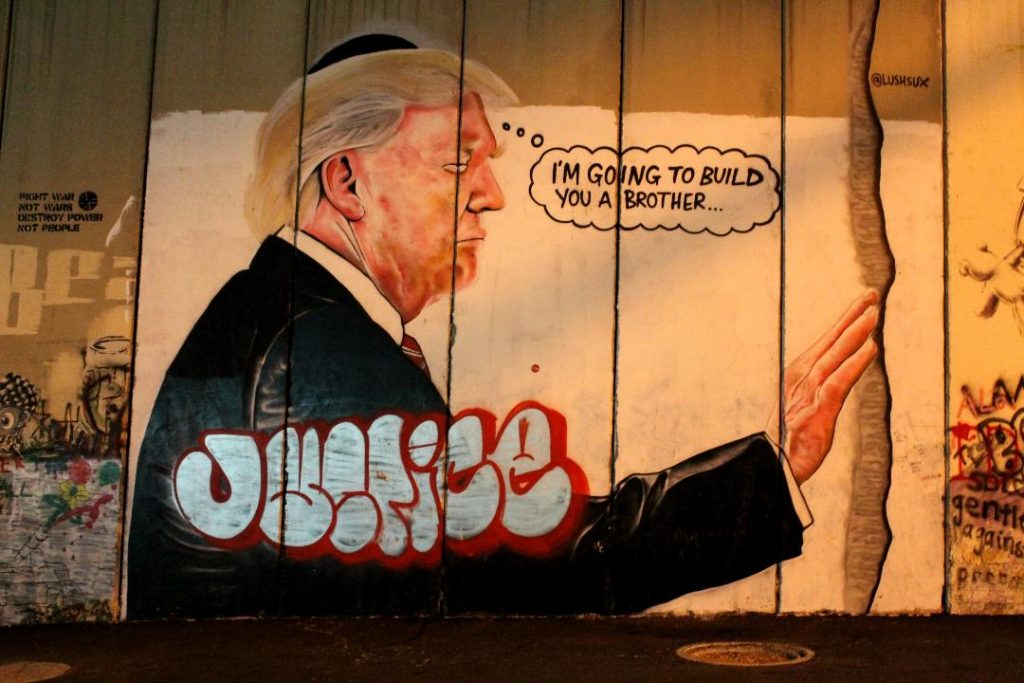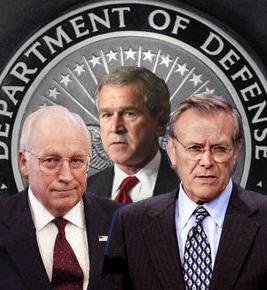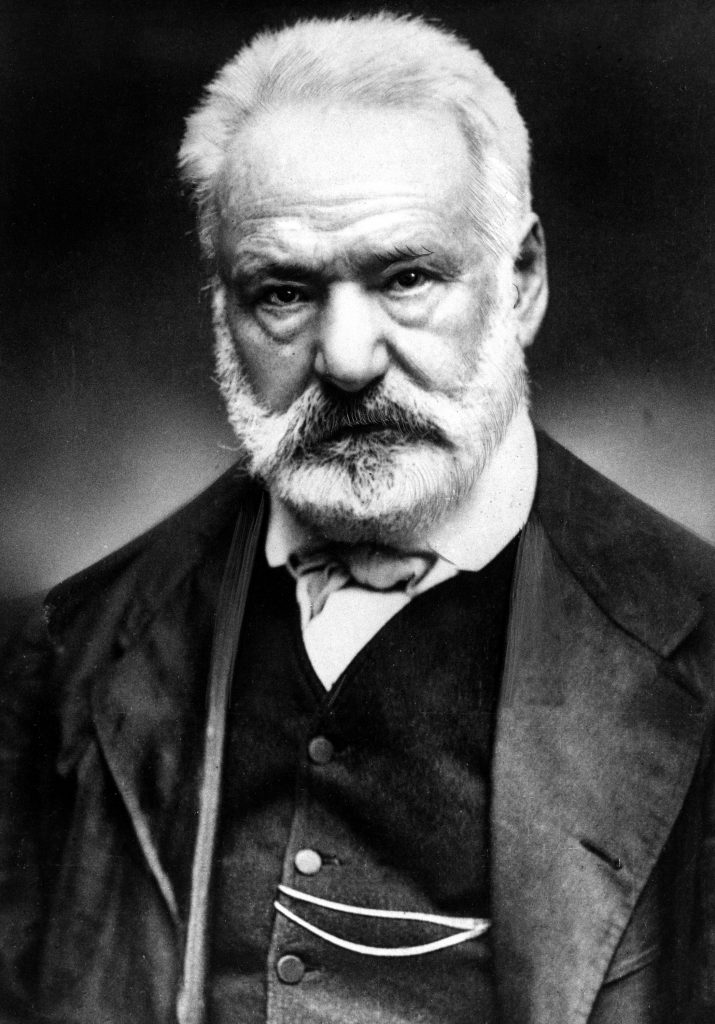It is all done in a fully barefaced manner. Those who are not part of this world could never even dream about such a ‘perfect’ design.
You come to your club, in my case to The Foreign Correspondent Club of Thailand (FCCT), and immediately the long arm of indoctrination begins stretching towards you.
You place yourself on a comfortable couch, and soon after get fully serviced. You get instructed, told what to think and how to formulate or modify your ideas.
You are periodically shown movies about “corruption and immorality” in China. You get encouraged to participate in some public discussions that are, among other things, trashing the anti-Western president of the Philippines.
Although lately also the Middle East, and particularly Syria, are brought into the spotlight.
Of course almost all that is on offer in such places like FCCT is the Western view, or concretely a set of Western views raging from conservative to ‘liberal’. The club is located in Asia, in the heart of Southeast Asia, but very few Asians are invited to speak here, except the few Thais who are well versed in the Western way of thinking. Or Western agents like the Dalai Lama, of course – such individuals can come anytime they want! Forget about hearing from ‘the other side’ – you’d never stumble here over speakers such as Communist thinkers or writers from Mainland China, or pro-Duterte academics or activists from the Philippines.
Most of the Thais who get spotted at the FCCT are actually those who provide support services for the Western gurus of mainstream media: interpreters, fixers, waiters and as well as some administrative support staff.
This is not a place for Asians to lecture Westerners about Asia; this is where Westerners tell Asians how to think in general, and what to think about their own countries in particular.
On the same floor as the FCCT, right down the narrow carpeted corridor, there are the offices of the BBC, the NBC and several other mainstream Western media outlets. ‘The Penthouse’ of the Maneeya Center Building in Bangkok is actually a self-sufficient propaganda complex.
And tonight it is offering a free screening (free for us, members) of a U.S. documentary film called Salam Neighbor, about Jordan’s huge Za’atari refugee camp, which hosts approximately 80,000 refugees just a few miles away from the Syrian border.
On the FCCT flier it says openly: “In partnership with the U.S. Embassy Bangkok and The American Film Showcase.“
A U.S. embassy official introduces the film. It is also being sponsored (openly) by the U.S. Department of State.
The FCCT is packed. Beer flows. People obediently clap to all the opening speeches. No one seems to be noticing the irony: The Empire’s foreign ministry hosting an event at the foreign correspondent’s club in the most important city of Southeast Asia. There are no jokes flying about, no sarcasm. Western media people are well disciplined. Forget about “Salvador” by Oliver Stone – these are quite different times.
It all feels mildly embarrassing. Here, one can never really witness a fiery ideological confrontation. People know their place. They are well aware of what they should say, and how to behave. But most importantly, they know what to write.
*
The film is short, only some 75 minutes, and it is truly predictable. It is not out-rightly bad. Cinematography is fine, and there are very few factual errors, perhaps because there are only a few facts on offer. The filmmakers are ‘politically correct’: they periodically break down in tears, particularly when interacting with some refugee children.
It is full of clichés, such as: “….. inhabitants of the camp opened their hearts and homes to us”.
But there are also several clearly predictable scenes, appearing on the monitors in all corners of the FCCT, with chilling regularity. Here is one, for instance: kids are playing violent war video games. One child suddenly comments:
“Yes, and this is Assad’s regime flag… They give me ammunition and weapons…”
We are fed with soft, ‘well-intentioned’ and well-filmed propaganda. Not one word is uttered about the essential and monstrous role of the West in the Syrian war. There is nothing about the Za’atari Camp being one of the training camps for the most extreme pro-Western and pro-Gulf terrorist organizations.
After the films ends, I decide to participate in the Q/A session.
Somehow sarcastically, I congratulate the two filmmakers who were flown to Thailand at the US taxpayer’s expense. I mention that I have also made some films inside refugee camps, including the notorious and brutal Dadaab on the Kenyan-Somali border. Then I ask, point blank:
“Did you know that Syrian refugees were allowed to tell you only one side of the story? I am well familiar with the Za’atari camp. There, as well as in the camps for Syrian refugees located in the Iraqi Kurdish region, Syrians are screened and unless they declare that they are against President Assad, they have no chance of getting processed and receiving assistance.”
The annoyed faces of veteran Western propaganda-makers now stare at me, point blank. The US embassy apparatchiks maintain their composure. These people are professionals and they hardly ever lose their calm.
But media people are scandalized. I exaggerate my Russia accent and I mention South American Telesur as one of the channels for which I have been making films. How dare I? Don’t I know my place? A non-Westerner telling Western opinion-makers about the world!
I conclude:
“Most of the Syrian refugees are not escaping from their government. They are fleeing from the horrors of war, triggered and upheld by the West and its allies in the Gulf and elsewhere.”
The silence is now complete.
Then a girl, a local Thai miss, obviously coming from the upper middle class and groomed in the West, approaches the microphone and asks with a cute giggle:
“I want to visit the Za’atari Camp early next year. I don’t know why, as I don’t know anything about the Middle East… but maybe I can do something for the refugees, no? And maybe I learn something?”
“And maybe take some selfies,” I think.
Soon after I begin to feel sick, and literally flee the place.
*
The entire Southeast Asia is imprisoned in the tight straightjacket of Western and Japanese pro-Western propaganda. However, the mainstream media and the way it disseminates Western propaganda is not the only example of how the straightjacket works.
Almost all serious and large bookstores, (at least those that are selling books in English), have already been ‘defeated’ by Kinokuniya, a Japanese mega seller. Kinokuniya is to bookselling in Southeast Asia, what Carrefour is to food vending. It operates in Indonesia, Malaysia, Thailand and Singapore, and its shops look elegant and sleek. But unless you want to buy some mainstream stuff, you may be truly disappointed, even shocked, by what you find (or not find) on the shelves.
It goes without saying that in those stores, one would always be able to find hundreds of appalling anti-Soviet propaganda books, such as those of the Nobel Prize in Literature laureate, Svetlana Alexievich. But try to search for a great, iconic Mexican left-wing author like Elena Poniatowska, and you will get nothing! And forget about finding most of works there of such enormous (but Communist) thinkers like Jose Saramago, Dario Fo, and Harold Pinter (all three authors were also awarded with the Nobel prizes in literature, but are strongly hated by the regime). If you are lucky, you will find one or two books from each of them, but not more than that.
Perhaps you may also find one or two plays by Bertolt Brecht. I searched in Bangkok, and found only one – Galileo.
In Southeast Asian bookstores, you can have “all you can eat” anti-Chinese, anti-Communist propaganda, but except for Mo Yan, not one book of any truly great modern Chinese Communist novelist or a poet.
Of course, you should never even try to find some “offensive materials”; and by offensive I mean sarcastically critical of all that the West has been implanting and upholding in this part of the world – religion, neo-colonialism, monarchism, or even local feudalistic structures which often hide behind such terms as ‘cultures’…
In Indonesia, the situation is the most ridiculous. There, all decent bookstores that mushroomed after Suharto stepped down have literally disappeared. Thereafter, Kinokuniya ‘modified’ its operation in Jakarta, and is presently selling only pop fiction, some Penguin classics and similar mainstream stuff.
Mr. Ariff, a staff marketing person at Kinokuniya, Plaza Senayang in Jakarta, explained:
“Arrangement of the shells has to be the same as in our Singapore store, but Indonesian management decides what to sell here.”
And decide they do! As expected, many books about Adolf Hitler (very popular historic individual in Indonesia), including his ‘best selling’ (at least in Jakarta) “Mein Kampf.” Right next to it, there are few shelves filled with anti-Communist propaganda of the lowest grade.
Indonesia has been, since 1965, always a Southeast Asian leader in brainwashing of the population.
One could of course argue that there are also some local chains of bookstores, selling books exclusively in the languages of Southeast Asia. However, the offering there is very limited. Frankly, there is no culture of high-quality translations of books in this part of the world, and the number of titles published in local languages is relatively small. Even the most prominent Indonesian novelist, Pramoedya Ananta Toer, once confessed to me, that while translating Maxim Gorky’s “Mother” to Bahasa Indonesia (“Ibunda”), he used the Dutch translation for his work, as well as his ‘intuition’ while scrolling through the original Russian text (he did not really speak much Russian, as he admitted).
*
After decades of great effort, the Western intellectual indoctrination of Southeast Asia is now almost complete.
It is partially being done through ‘education’, by disbursing scholarships for students and offering conditional funding for Indonesian, Thai, Malaysian and other ‘scholars’ and professors.
Western propaganda is also ‘successfully’ distributed through ‘culture’. Western ‘cultural centers’, which are often (bizarrely) the only places offering ‘high art’ in most of the local cities, are clearly advancing their European and North American imperialist agenda (as I colorfully described in my latest novel “Aurora”).
The elites here are almost fully subservient to foreign business and political interests. Patriotism is only a buzzword, with no substance behind it.
There is no other part of the world so disconnected from the ideological and physical opposition to Western imperialism, as Southeast Asia.
The consequences of total Western brainwashing are devastating: the entire colossus of Southeast Asia is unable to produce great thinkers, writers, filmmakers, or scientists. There are only a few small exceptions in Thailand (including an important novelist Chart Korbjitti) and in Indonesia (the political painter Djokopekik, a former political prisoner during Suharto’s fascist regime, described by my Australian friend, the artist George Burchett, as ‘an explosive local fusion of Diego Rivera and Picasso’).
Other poor, devastated or complex parts of the world are literally regurgitating entire armies of tremendous writers, filmmakers and intellectuals: from Nigeria to Lebanon, from Iran to Mexico.
*
With the exception of Vietnam (and to some extent, Laos), the West has literally uprooted all Communist and socialist ways of thinking, as well as internationalism. It was done brutally, though orchestrating massacres and purges. Hundreds of thousands of leftists, perhaps millions, were killed in Indonesia alone, after the 1965 coup. 30% of the population was murdered by Suharto’s military in East Timor, after the left-wing FRETILIN movement won independence from Portugal and consequently took power in fair and clear elections. In Thailand, Communists were burned alive in oil barrels. The killing and disappearing of Communists took place in Malaysia, Singapore and the Philippines.
In several countries, including Indonesia, th entire ‘Communist ideology’ is still officially banned.
After internationalism, anti-imperialism, Communism and intellectualism were destroyed, Southeast Asia was injected from abroad with conservative forms of religion, with consumerism, ‘traditional family values’ and grotesquely extreme individualism.
Simultaneously and already for years and decades, this part of the world has become truly famous, even notorious, for sex tourism, and for armies of ‘expats’ who are searching for a cheap and easy lifestyle. In the process they are managing to shape local ‘cultures’, to de-intellectualize this part of the continent. While Beijing and Tokyo are attracting, like magnets, countless great foreign scholars, thinkers and creative people, Southeast Asia is generally besieged by, to put it mildly, a very different type of foreigners. Why are they so comfortable here? It is because of the ‘great respect’ they can enjoy in Southeast Asia for just being white, no matter what their age or life achievements. This respect comes from the clear indoctrination of locals, from the pronounced lie, repeated thousands of times (mostly indirectly), that Western culture is superior, and in fact the greatest in the world.
To make Europeans and North Americans even more comfortable here: in Southeast Asia, almost all basic doctrines disseminated by Western propaganda, as well as the most primitive grain of capitalist and right wing ideologies have been historically accepted, tolerated, and even dutifully replicated.

For the local academia, it is only the Western (or Japanese) stamp of approval that matters. As a result Southeast Asia forgot what patriotic and independent thought truly consists of.
Most of the Southeast Asian newspapers have no ‘foreign correspondents’ in faraway places. Almost all of their international news reports come directly from Western mainstream agencies such as Reuters, AFP and AP. No loopholes through which at least some alternative opposition information could enter and influence the masses, seems to be available.
You ask on the streets of Bangkok, Jakarta or even Kuala Lumpur about ‘South-South’ co-operation, and you will be greeted with blank stares. You would be suspected of talking about some new mobile phone application, or a chain of fast food restaurants. And what is BRICS, masonry?
While bookstores are basically finished, commercial cinemas are offering extremely carefully selected (the emptier the better) Hollywood ‘blockbusters’ and local horror films.
Local art forms, including traditional political theatre in Indonesia (ketoprak) is lately ‘out of fashion’, read: sidelined, made fully irrelevant, silenced.
Scarce art film clubs, like the one in the River City in Bangkok, has stickers of US and European cultural institutions (“sponsors”) ‘decorating its entrance.
One naughty art seller, in one of the galleries near the River City film club, just recently dared to exhibit a painting depicting Obama, with two obnoxious missiles hanging in between his legs. But was apparently asked to remove provocative art work, right before the official film screening which was sponsored by the Turkish embassy and attended by several Western diplomats. “Come with me into the storage and I will show you,” he whispered to me, as if he was peddling some illegal pornographic material or narcotics.
*
Perhaps the most telling example of “how things are done”, I encountered several years ago on the premises of the Goethe Institute in Jakarta. Its curators decided to exhibit some old photographs from the Polish ‘Solidarity’ days, when, during one protest in the city of Gdansk, security forces fired at protesters.
The exhibition was put together, barefacedly, in the capital city of Indonesia, where ‘Communism’ is patently banned, where millions were massacred during the US-sponsored coup of 1965, and where the entire huge archipelago has been irreversibly plundered and devastated by multi-national and local mining and logging cartels. The nightmarish, ultra-extreme capitalism has been ruling and ruining Indonesia for years and decades, but it was Gdansk that Germany decided to show to the Indonesian public!
A handful of people killed by the Communists, decades ago, in Poland, was commemorated and shown to the Indonesian public. Of course the German cultural institute would never even dream about arranging an exhibition commemorating the mass slaughter of Communists by Indonesian pro-Western genocidal forces.
*
Now Southeast Asia knows nearly nothing about Russia, and almost nothing about China (except what the Western demagogues want it to know). Africa, including South Africa, is located on another planet, and so is Latin America. Only local elites can afford to travel to far away places, and these people are loyal to their Western masters and official doctrines; they would never tell the truth, never rock the boat of disinformation.
The local population knows generally more about North American pop or European football, than about its neighboring countries. The Southeast Asian poor are kept totally ignorant about Latin American attempts to build just, egalitarian societies. They know close to zero about Cuba, Bolivia, Venezuela or Ecuador.
Of course there is absolutely no way one could discuss, in Southeast Asia, the recent re-election of MPLA in Angola (an event of tremendous global significance, as Angola is one of the symbols of the Western colonialist crimes against humanity, as well as of neo-colonial plunder). There is no way of discussing Cuba and its internationalism here, or even the coalition of countries, which are now standing proudly and determinedly against Western imperialism.
And what about the Middle East? It is fully limited to the Palestinian issue, and even that is discussed only in predominantly Muslim Indonesia and Malaysia. Another Middle Eastern ‘link’ is the unnaturally injected hatred for President Assad, who is accused of being too ‘secular’ and too ‘socialist’ (of course, these are great ‘crimes’ here, definitely not praise).
*
In Southeast Asia, the West is clearly victorious. It has successfully ‘neutralized’, ‘pacified’, indoctrinated and intellectually enslaved this large (and in the past diverse) part of the world.
Hopefully this situation will not last forever, and not even for too long a time.
The Philippines and Vietnam are rapidly coming back to their senses, increasingly determined not to take dictates from the West.
But Indonesia has suffered a major setback, after its traditional-style ‘legal coup’ against Jakarta’s progressive Governor ‘Ahok’, who was smeared and then imprisoned on thoroughly irrational and bizarre accusations that he ‘insulted Islam’ (charges so bizarre that even local linguists came to his defense, but the verdict was ‘political’ and had nothing to do with justice). His true ‘sin’: Ahok tried to implement at least some elements of socialism in this still hopelessly fascist country. He fell. Others may make a fresh attempt, soon.
In the meantime, both China and Russia are making great inroads in the region. Local ‘creams’ are watching, attentively. Most of Southeast Asian elites have always been for sale, for centuries, of course with the exception of those in North Vietnam.
As the anti-imperialist coalition is getting stronger and wealthier, there could actually be some serious changes of heart in foreseeable future, at the top of several Southeast Asian countries. Even Communism could be finally legalized again, but only if it manages to disperse some funding, scholarships, and substantial grants.
If it would, than those uniform debates at the FCCT in Bangkok could finally become vibrant and diverse.
The West will, of course, work very hard to prevent all this from happening.
Andre Vltchek is philosopher, novelist, filmmaker and investigative journalist. He’s a creator of Vltchek’s World in Word and Images, a writer of revolutionary novel Aurora and several other books. He writes especially for the online magazine “New Eastern Outlook.”
This article was originally published by New Eastern Outlook.
All images in this article are from the author.

